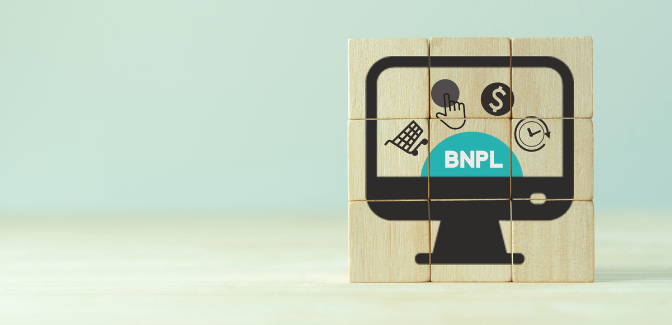*Originally published on CUInsight.com
What is Buy Now, Pay Later (BNPL)?
BNPL is a form of short-term financing. It allows consumers to purchase and pay for a product or service in installments. Customers typically make one upfront purchase payment and then spend the rest in installments during a predetermined period. Unlike traditional consumer loans or credit cards, BNPL offers zero interest.
The Rise of BNPL
BNPL usage surged during the year of the pandemic. It jumped 81.2% in 2020 when the COVID-19 pandemic began. Unemployment was at its worst, and people were struggling to pay bills and buy household necessities. When faced with financial challenges, BNPL became increasingly popular, as people could keep their families afloat despite the failing economy and growing unemployment.
Along with a rise in unemployment, the culture of consumer spending was changing, as people spent more time shopping online rather than in brick-and-mortar retail locations. It became even more imperative for companies to offer omnichannel payment solutions, prioritizing BNPL.
Currently, BNPL companies are facing challenges—a crowded market, increased regulatory scrutiny, and declining valuation. For example, Klarna has lost ~85% of its valuation in a year. However, BNPL is still very much a huge deal when it comes to short-term financing and its effect on the industry. Here, we explore how BNPL is received across various generations.
Gen Z on BNPL
This easy-lending process is becoming increasingly popular among younger generations. Zoomers, in particular, prioritize flexibility and convenience. Gen Z loves lavish lifestyles, and BNPL allows them to make purchases while planning out their finances to pay later. Most Zoomers do not yet own a home or have a steady income, making BNPL appealing. The idea of breaking up costs makes prices feel cheaper to Gen Z, and BNPL helps them get high-ticket items such as designer clothes or computers.
Gen Z is also accustomed to the subscription model, which began to rise around 9 years ago, and is currently a $650 billion economy. This sets the stage for this generation to be more amenable to paying in installments.
Millennials on BNPL
Millennials are incredibly tech savvy. They know how to save and spend their money. In 2021, 40.6% of BNPL users were millennials. Millennials typically have higher incomes than Zoomers, and most people think lower-income people prefer BNPL. However, those with higher incomes are more drawn to BNPL solutions. Those who earn $50,000 to $74,999 are the most likely to use BNPL. BNPL offers lower interest and helps improve credit scores. 90% of millennials are moving away from traditional credit cards, and BNPL provides the perfect solution.
Gen X on BNPL
Currently, BNPL services are starting to target older generations. Gen X shares similar values with younger generations and baby boomers alike, creating diversity in their preferences about BNPL. In 2022, Consumer Affairs surveyed a thousand people, and 700 used BNPL. Out of those users, 27% were Gen X. This is the second smallest generation of BNPL users.
Baby Boomers on BNPL
Contrary to most assumptions, many baby boomers are using BNPL. One in four baby boomers had been using BNPL for over a year. However, only 20% of those who use BNPL were baby boomers, making them the smallest generation to use it. Digital comfort for these older generations greatly influences their incentive to use BNPL services. Baby boomers are often wary of concepts they do not understand and would rather stand by the methods they have used for most of their lives.
Conclusion
The BNPL user profile is changing fast. There are many reasons older individuals will increasingly consider using BNPL solutions, as the solutions improve credit scores and offer lower interest rates than traditional credit options.
Although BNPL has been around for years, it has surged over the last two years due to dramatic technological change, the economy, and the pandemic. Due to various opinions regarding credit, digital comfort, and the changing economy, some generations were more drawn to BNPL solutions than others. However, BNPL has and will continue to change and adapt to different generations. Financial institutions should think about how BNPL will fit into their payments strategy. Having an infrastructure ready to handle new payment types or use cases is key.
Read more about BNPL in Buy Now, Pay Later—Good, Bad, or Somewhere in the Middle?
Today’s legacy and siloed banking technology infrastructure limit financial institutions’ ability to rapidly innovate. It’s time to look at money movement in a new way. Alacriti’s Orbipay Unified Money Movement Services does just that. Whether it’s real-time payments, digital disbursements, or bill pay, our cloud-based platform enables banks and credit unions to quickly and seamlessly deliver modern digital payments and money movement experiences. To speak to an Alacriti payments expert, please call us at (908) 791-2916 or email info@alacriti.com.




